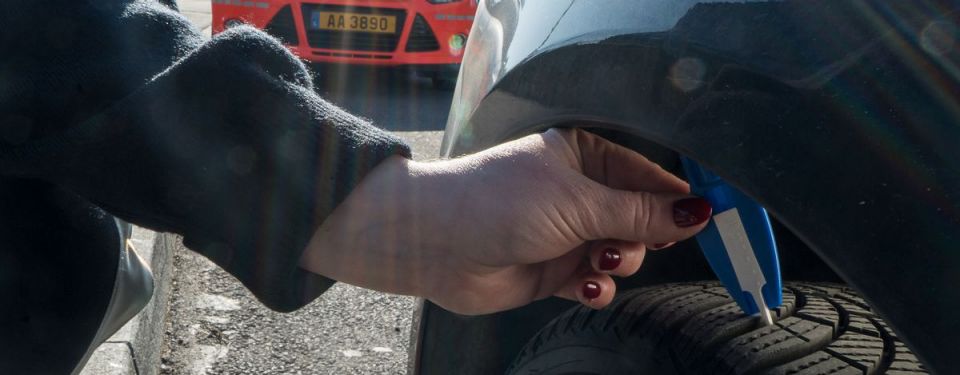
Keeping your vehicle, and especially the tyres, in good technical condition is an important factor in road safety. Generally tyre pressure should be checked once a month, when the tyres are cold. Under-inflated tyres make driving more dangerous and can lead to accidents due to a loss of control of the vehicle. In addition, you should never use tyres that are over 6 years old.
Both winter and summer tyres must have a minimum tread depth of 1.6 mm.
Winter tyres reduce stopping distances by 25% compared to summer tyres. According to the Luxembourg Highway Code, class M1 vehicles (motor vehicles with a maximum of eight seats in addition to the driver's seat) and class N1 vehicles (trucks/vans) driven on public roads in Luxembourg must be fitted with winter tyres (M+S, M.S., M&S) on all wheels of the vehicle in winter conditions, i.e. black ice, packed snow, slush, icy or frosty patches. For those two classes, mixing winter and summer tyres is prohibited.,
The obligation to have winter tyres therefore does not apply for a specific period of the year, but depends on the weather conditions. This requirement applies to all those driving in the Grand Duchy, regardless of the country where the vehicle is registered, and therefore includes cross-border workers and those passing through.
Non-compliance with this obligation will lead to a €74 fine and the vehicle being immobilised on the spot.
For HGVs, coaches, buses and motorhomes with a maximum authorised mass of more than 3500 kg, all the drive axles must be fitted with winter tyres.
Mopeds, motorcycles, tricycles, light quadricycles and quadricycles, tractors and self-propelled machinery are not included in the requirement for winter tyres.
Police recommendations
Even without wintry conditions, winter tyres are preferable to summer tyres when outdoor temperatures fall below 7°C. The Police recommend keeping winter tyres on your car from October to Easter.
Although the Luxembourg Highway Code states that winter tyres must have a minimum tread depth of 1.6 mm, the Police recommend replacing the tyres when the tread depth is less than 4 mm.
When tread depths are different, the tyres with the deeper treads must be fitted on the rear wheels.


